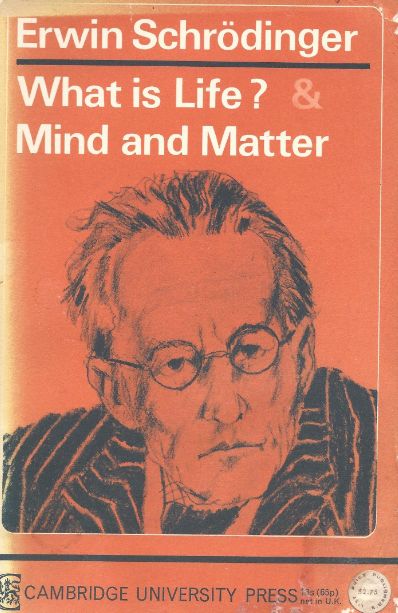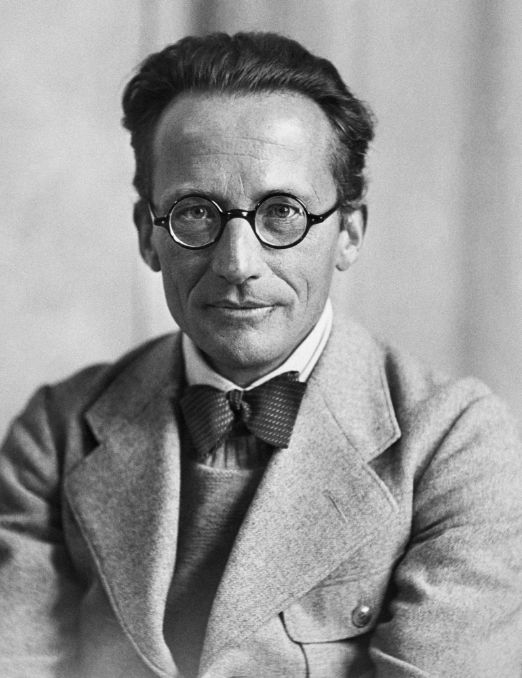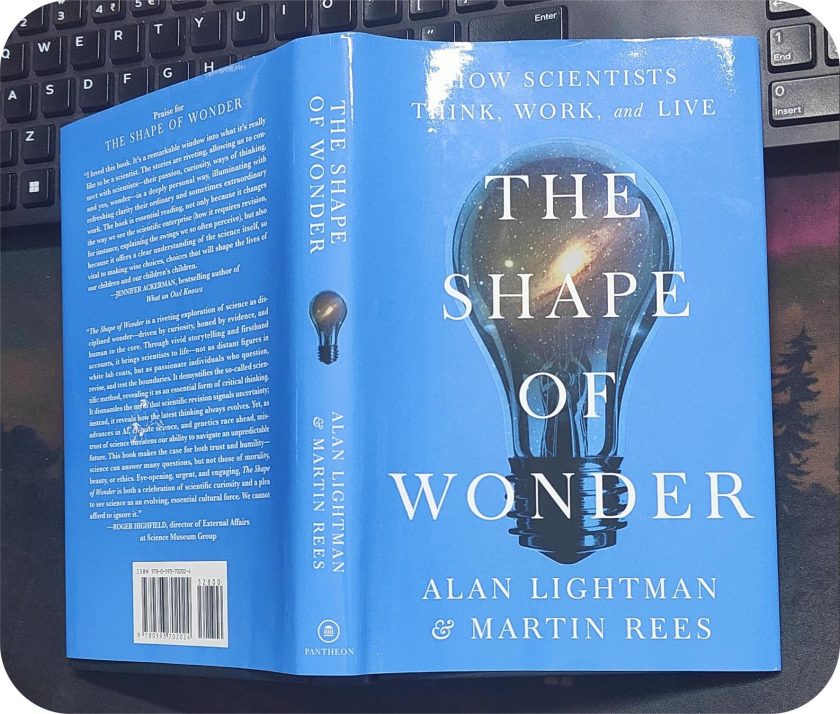
In this post, we will be covering the second segment of Schrödinger’s famous book, What Is Life? with Mind and Matter.
We have already talked about the first portion – What Is Life? Now, here, we will be focusing on Mind and Matter. (If you haven’t read, I’d recommend to go through the previous post – What Is Life? by Erwin Schrödinger. It will help in better understanding of his ideas. Thanks 🙂
In this series of the lectures, Schrödinger has tried to blend physics, evolutionary theory, and philosophy.
He resonates with the idea which is also a running motif in Upanishads, (sacred Hindu texts), that is, behind all diversity lies oneness.
Although he was critical of speculative aspects of metaphysics. Yet, he explored philosophical ideas and drew inspiration from various traditions, including Advaita and Buddhist thought.
Eventually, he concluded that life cannot be fully explained by the laws of physics alone. And suggested the existence of some underlying principles or organizing force.
Individual “I” is an aspect of a larger whole
Schrödinger explores the problem of the action of mind on matter within the framework of the scientific representation of the objective world. (The word “self” is used interchangeably with “mind”, in the book).
He argues that the objective (material) world has been constructed by excluding the self or mind from it. Thus, making the mind separate from and independent of the material world. Therefore, according to this perspective, the mind cannot directly act on or be acted upon by the material world.
He, then, offers his own solution, influenced by Advaita Vedanta, in the epilogue of “What is Life?”. He highlights two points:
- he functions as a mechanism according to the laws of nature, and
- that he, as a conscious mind, has direct experience of directing its motions.
From these observations, Schrödinger draws the inference that the “I” in the broadest sense, encompassing every conscious mind that has ever said ‘I’, is the entity that controls the motion of atoms according to the laws of nature.
This also implies, that an individual “I” in the narrow sense does not control the entire world. Rather, it suggests that the individual “I” is an aspect of a larger whole, which includes the universal “I” and the manifest world.
In this viewpoint, the mind or consciousness is intimately connected to the functioning of the material world, with the universal “I” being the ultimate source of control or direction.
Schrödinger’s perspective reflects his exploration of the relationship between consciousness and the material world. The conclusion stems from both scientific understanding and metaphysical concepts such as the unity of consciousness found in Advaita Vedanta.
Concept of unity and interconnectedness from Eastern philosophies
The book suggests that Schrödinger gravitated towards Eastern philosophies. He was influenced by the concept of unity and interconnectedness, which is found in (Hinduism) Vedantic and Buddhist traditions.
“The doctrine of identity can claim that it is clinched by the empirical fact that consciousness is never experienced in the plural, only in the singular. Not only has none of us even experienced more than one consciousness, but there is no trace of circumstantial evidence of this even happening anywhere in the world”. (p130.)
He was drawn to the idea that reality is ultimately undivided and that our perception of separate objects and entities is an illusion. This perspective resonated with his understanding of quantum mechanics, which challenged classical notions of objectivity and determinism.
Metaphysics to counterbalance materialist metaphysics
He delved into metaphysics not for finding answers but rather exploring the philosophical implications of scientific theories, particularly quantum mechanics.
He felt that there are certain limitations when it comes to reason and logic. And saw metaphysics as a means to counterbalance materialist metaphysics.
He acknowledged the practical usefulness of metaphysics as a guide for action and knowledge, despite its shaky epistemic validity. Which means, credibility (that is not based on empiricism) of the knowledge or understanding about reality since the claims are generated through metaphysical speculation.
Since, metaphysics has always been opposite to empirical sciences. Therefore, he advocated for an inclusive approach that combines different aspects of metaphysical views – speculative as well as materialist metaphysics.
Monistic idealist metaphysics
He deliberately adopted a monistic idealist metaphysics inspired by the Upanishads and the Advaita Vedanta tradition.
It posits that consciousness is not merely a product of physical processes but rather the underlying foundation from which all aspects of reality emerge. The physical world, therefore, is an apparent reality, a manifestation or appearance within the realm of consciousness.
This metaphysical perspective, according to Schrödinger, could help overcome the perceived shortcomings of materialist views.
Duality between mind and matter
Based on his interpretation of Advaita Vedanta and the underlying lived experience associated with it, Schrödinger concluded that the fundamental illusion in our naive and scientific materialist worldview lies in duality and multiplicity.
He saw duality between mind and matter, multiplicity of minds within living bodies, and multiplicity of things in the material world as illusory aspects that can be transcended through a monistic understanding.
Criticism against the concept of reincarnation
Schrödinger criticized the individualistic conception of reincarnation and questioned the notion of a personal “I” that is reborn from one living body to another.
His concept of personal “I-ness” or “personal identity” stems from ideas of Ernst Mach and David Hume.
Like Mach and Hume, he viewed the personal “I” as a conceptual construct that synthesizes a sequence of thoughts and sensations. He argued that there is no substantial entity or essence to be transmitted from one body to another.
This perspective aligns with the critique of the popular understanding of transmigration in Buddhism.
In Buddhism, the concept of an enduring and autonomous self (atman) is refuted, and personal identity is seen as a collection of impermanent aggregates (skandhas). Schrödinger’s idea that the personal “I” is a conceptual unity of thoughts and sensations resembles the Buddhist doctrine of the aggregates.
It is quite possible that Schrödinger blended insights from Advaita Vedanta, which he was explicitly interested in, with deconstructive analyses borrowed from Buddhism.
Does this imply that he totally discarded the concept of reincarnation? No.
In fact, he gave it an abstract meaning that resonated with his intuition of the “eternal present” and the “underlying unity” of all selves. His interpretation of reincarnation went beyond the naïve understanding and aligned with his broader metaphysical framework.

Takeaway
Schrödinger investigated that life is an epitome of order. And it is through his ideas, we too begin to look at life and evolution via the lens of thermodynamics.
Like inanimate objects, we the sentient beings, do not rush towards entropy. Rather, we counteract this phenomenon by ingesting energy from our environment itself. This idea is quite profound.
As the book progresses, we find his inclination towards monistic idealist metaphysics. It was surely influenced by his readings of the Advaita Vedanta tradition.
Although, his ideas were thought-provoking and interdisciplinary, they were not universally accepted among physicists and philosophers.
Nevertheless, I thoroughly enjoyed his reflections on the ageless questions about consciousness. It is quite interesting to read and think with scientific approach through Upanishadic mindset. I believe, the sages or researchers who poured the theoretical aspects of metaphysics might have had some rational foundation. After all, life cannot be fully explained by the laws of physics alone.
I was totally blown away, especially the second part – Mind and Matter. So, if you are one of those who want to read or understand the “Hard problem of Consciousness”, this book offers the best explanation to what “human consciousness” is. I highly recommend it.



